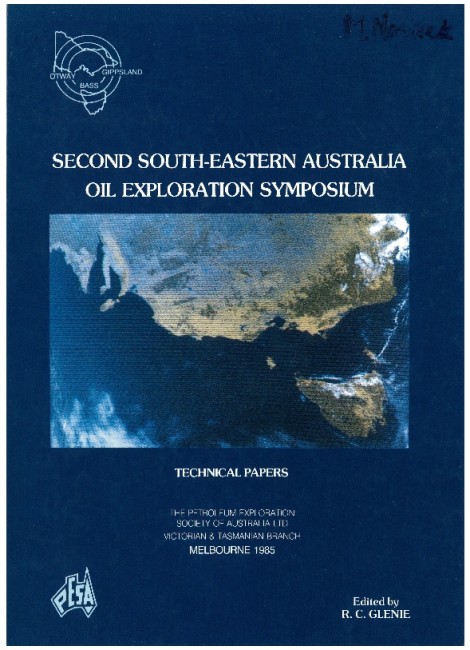Publication Name: Second South-Eastern Australia Oil Exploration Symposium - Technical Papers
Authors: M. Megallaa
Date Published: December 1986
Number of Pages: 31
Reference Type: Book Section
Abstract:
This paper is essentially an extract from the author's contribution in a recent appraisal of regional seismicmapping in the Victorian sector of the Otway Basin by the Department of Industry, Technology and Resources
(Megallaa, in press). Geological information from numerous published articles and released well data
from petroleum and groundwater exploration are augmented by the seismic mapping results in an attempt to
synthesize the basin's tectonic development.
The seismic character and reliability of the mapped Top Otway Group (breakup unconformity), Top Sherbrook
Group (top Cretaceous-base Tertiary unconformity) and acoustic basement (mainly onshore) horizons are discussed.
Magnetic basement mapping offshore reveals a number of tectonic elements which include the predominantly NW-SE trending Portland, Voluta and Otway Basin Margin Troughs and the Voluta and Otway Margin Highs. Onshore, the previously mapped Late Cretaceous to Tertiary Tyrendarra and Port Campbell Embayments, the Ardonachie and Portland Troughs, and the Warrnambool High are also shown to be basement features.
The structural framework of the basin is complex because of the action of several successive tectonic episodes. This complexity does not always allow the recognition of various structural components associated with any one particular tectonic episode.
A review of recent concepts on initial basin rifting is presented. The wrenching mechanism is accepted to
have been responsible for the rift development and subsequent phases associated with the splitting of
Australia from Antarctica.
The initial deposits in the rift (Upper Jurassic to Lower Cretaceous Otway Group) were associated with volcanic eruptions. Near the end of the Early Cretaceous, volcanic activity ceased and a phase of uplift and erosion (breakup unconformity) occurred prior to the deposition of Upper Cretaceous Sherbrook Group sediments in the onshore and shelf areas. Towards the continental margin, the breakup unconformity is unrecognisable and deposition during the Cretaceous may have been continuous. The end of the Cretaceous is represented by an unconformity which is also unrecognisable in the margin region. Gradual basin downwarping during the Tertiary resulted in a widening of marine influence.
In the Portland and Voluta Troughs, the top Otway horizon attains greater depths (7000 m or more) through a series of down-to-basin faults with some throws in excess of 1000 m. In these troughs the Otway Group sediment thickness is 3000 to 5000 m. The Upper Cretaceous Sherbrook Group sediments reach a thickness of 6000 m along a depositional axis in the upper slope. South of this axis the sequence thins out rapidly.
The Tertiary sequence reaches a maximum thickness of 2000 m along an axis which runs parallel to the Portland Trough, and probably represents the prepresent day shelf edge.


